3 Signs Your House Is Poorly Ventilated
A well-ventilated home creates a comfortable living environment 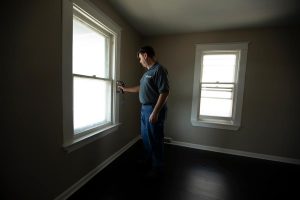 by regulating airflow and controlling moisture indoors. To avoid potential health problems caused by mold growth or polluted air, you should know the signs of a poorly ventilated house.
by regulating airflow and controlling moisture indoors. To avoid potential health problems caused by mold growth or polluted air, you should know the signs of a poorly ventilated house.
1. You and the house occupants are unwell
When Indoor Air Quality (or airflow in the home) is compromised, the occupants could suffer health consequences. You may notice that you or a family member has a stuffy or runny nose, a sore throat, a headache, or dizziness. Many of these symptoms mirror allergies or the common cold.
Experience tells us otherwise.
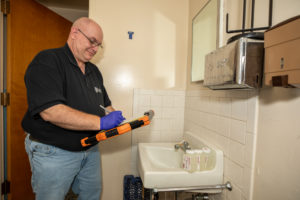 Pollutants and chemicals compromise air quality. The particles circulate in the ductwork, accumulate in the air, and settle in the dust.
Pollutants and chemicals compromise air quality. The particles circulate in the ductwork, accumulate in the air, and settle in the dust.
There are serious health concerns that come from outdoor and indoor contaminants.
The Environmental Protection Agency identifies the following pollutants as PRIMARY causes of indoor air problems:
- Fuel-burning combustion appliances
- Tobacco products
- Building materials and furnishings as diverse as:
- Deteriorated asbestos-containing insulation
- Newly installed flooring, upholstery, or carpet
- Cabinetry or furniture made of certain pressed wood products
- Products for household cleaning and maintenance, personal care, or hobbies
- Central heating and cooling systems and humidification devices
- Excess moisture
- Outdoor sources such as:
- Radon
- Pesticides
- Outdoor air pollution
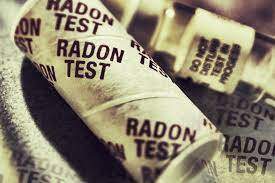 Radon, in particular, is a cancer-causing gas that leaks into homes through cracks, gaps, cavities inside walls, and the water supply. Radon tends to enter buildings at their lowest point, allowing this dangerous gas to build up in poorly ventilated, airtight dwellings.
Radon, in particular, is a cancer-causing gas that leaks into homes through cracks, gaps, cavities inside walls, and the water supply. Radon tends to enter buildings at their lowest point, allowing this dangerous gas to build up in poorly ventilated, airtight dwellings.
Asbestos is just as bad for human health. Asbestos exposure could be made worse by living in a poorly ventilated house with deteriorated asbestos-containing materials.
Proper ventilation keeps a home healthy, but you need to know if there are pollutants in your home. Hiring an experienced environmental company to test for radon, asbestos, and other contaminants is the only way to see what impacts the IAQ.
2. It’s hard to heat or cool all the rooms in the house
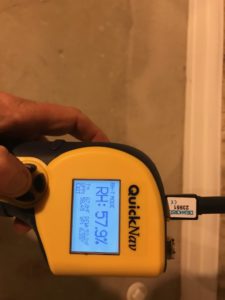 Heating and cooling issues can be tricky to pinpoint.
Heating and cooling issues can be tricky to pinpoint.
Think about your home. Are all the rooms in the house comfortably heated in cooler seasons and comfortably cooled in warmer seasons? Is it difficult to evenly distribute heat or cold air throughout each level of your home?
What factors contribute to heating and cooling issues?
- Home improvements like new windows and new roofing change the pressure in a home. It is possible for a home to become too “tight,” which interferes with the natural airflow.
- Older homes are not always adequately insulated. Despite their appeal, older homes tend to be drafty because of air leaks in the attic, basement, or doorways. Not only is a drafty house more expensive to heat and cool, but there’s a greater chance that mold will grow in the warmer months.
- Ghosting is sometimes the result of temperature differences inside versus outside the home. Cold spots on ceilings and walls appear when moist dust particles collect on the surfaces. These mysterious markings are called “ghost” marks.
- Moisture in the ductwork is a big problem. The source of moisture could be from fresh air intake vents, or louvers, which have been compromised somehow. A louver system allows fresh air to flow into the home while keeping debris and rainwater out. Sometimes precipitation penetrates the safeguards and builds up in the ducts. A build-up of moisture impacts the functionality of the air ducts and increases the chances of mold growth.
3. Moisture on the windows in the morning
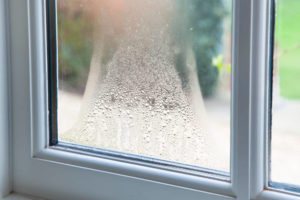
Moisture on the windows could signify that the ventilation system is compromised. It is worth noting that moisture on the windows does not always indicate a problem with the HVAC system. Sometimes the windows appear sweaty because people turn their furnaces down at night and close the blinds, creating a barrier between the curtain and the window.
Other causes of sweaty windows do, however, relate directly to a ventilation issue. The problem could come from a gas fireplace. If the house isn’t venting properly, the moisture lingers in the air.
On the other hand, if there’s an issue with ventilation in the attic, frost builds up on the windows or glass panels. The heat from the downstairs should rise and vent out if the system is working.
Attic condensation could be caused by:
- Improperly vented bathroom exhausts (routed to the attic)
- Poor attic ventilation or insulation
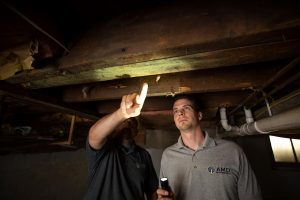 Not sure if your house is well-ventilated? Are you concerned about the air quality inside your home? Contact AMD Environmental Consultants for an analysis of your living conditions. Our team is prepared to answer your questions, test for environmental hazards, and advise accordingly.
Not sure if your house is well-ventilated? Are you concerned about the air quality inside your home? Contact AMD Environmental Consultants for an analysis of your living conditions. Our team is prepared to answer your questions, test for environmental hazards, and advise accordingly.

